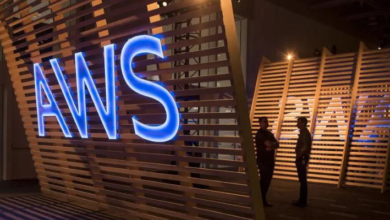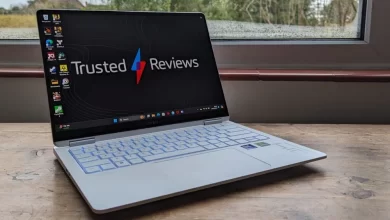How to Find the Perfect Website Designer for Your Needs

Finding the right website designer can be a daunting task, but with the proper guidance and strategies, you can hire the perfect fit for your project. Explore the top places to find talented designers and learn how to effectively collaborate with them to create a stunning website.
In today’s digital age, having a well-designed website is more than just a luxury – it’s a necessity. Your website serves as the virtual storefront for your business, representing your brand and offering potential customers their first impression of your products or services. With attention spans dwindling and competition just a click away, a poorly designed or outdated website can quickly turn visitors away, costing you valuable leads and revenue.
While DIY website builders have made it easier than ever to create a basic online presence, hiring a professional website designer can elevate your site to new heights. A skilled designer brings expertise in user experience, visual aesthetics, and cutting-edge technologies, ensuring your website is not only visually stunning but also optimized for conversions, user engagement, and search engine visibility.
When searching for the perfect website designer, it’s crucial to consider factors such as their portfolio, industry experience, communication skills, pricing, and cultural fit. By finding the right designer who aligns with your brand’s vision and goals, you can create a website that truly sets you apart from the competition and drives real business results.
What is a Website Designer and Why Do You Need One?
A website designer is a professional who specializes in creating visually appealing and user-friendly websites. Their role is crucial in crafting a website that not only looks great but also provides an exceptional user experience. With their expertise in design principles, color theory, typography, and layout, website designers ensure that every aspect of a website is aesthetically pleasing and easy to navigate.
Hiring a professional website designer offers numerous benefits. They bring their expertise to the table, saving you time and effort that would otherwise be spent learning complex design software and techniques. Additionally, a designer can ensure that your website maintains a consistent branding and visual identity across all pages, reinforcing your brand’s credibility and professionalism.
Types of Website Designers
When it comes to finding a website designer, you have several options to choose from:
- Freelance Web Designers: These are independent professionals who offer their design services on a project basis. They often work remotely and can provide a cost-effective solution for smaller projects or businesses with limited budgets.
- Web Design Agencies: These are companies that employ teams of designers, developers, and other professionals to provide comprehensive website design and development services. Agencies typically offer a wider range of services and can handle larger, more complex projects.
- In-House Designers: Some businesses choose to hire full-time, in-house designers to handle their website design and maintenance needs. This option can be more expensive but provides a dedicated resource and closer collaboration.
Each type of website designer has its advantages and disadvantages, so it’s essential to evaluate your specific needs and budget before making a decision.
Factors to Consider When Hiring a Website Designer
When it comes to hiring a website designer, there are several factors to consider to ensure you find the right fit for your project:
- Budget: Website design services can vary widely in cost, so it’s essential to establish a realistic budget upfront. Freelancers may be more affordable for smaller projects, while agencies typically charge higher rates for their comprehensive services.
- Portfolio and Experience: Review the designer’s portfolio to assess their design style, expertise, and experience with projects similar to yours. A strong portfolio showcasing a diverse range of work is a good indicator of their capabilities.
- Communication and Process: Effective communication and a well-defined process are crucial for a successful website design project. Evaluate the designer’s communication style and ensure they have a clear understanding of your requirements and expectations.
- Specialized Skills: Depending on your project’s needs, you may require a designer with specialized skills, such as e-commerce website design, responsive design for mobile devices, or experience with specific platforms like WordPress or Shopify.
- Availability and Turnaround Time: Discuss the designer’s availability and expected turnaround time for your project. Ensure their timeline aligns with your deadline and that they can dedicate sufficient time and resources to your project.
Assessing Your Business Needs and Budget
Before embarking on your search for the perfect website designer, it’s essential to evaluate your business needs and set a realistic budget. Different types of websites serve different purposes, and understanding your requirements will help you find the right designer and allocate resources effectively.
Start by identifying the primary purpose of your website. Is it an informational website to showcase your products or services? An e-commerce platform to facilitate online sales? A portfolio to display your creative work? Or a combination of these? Each type of website has specific design and functionality requirements that will impact the overall cost.
Once you’ve defined your website’s objectives, it’s time to set a budget. Web design services can range from a few hundred dollars for a basic website to tens of thousands for a complex, feature-rich platform. Be realistic about what you can afford, but also understand that investing in a professional web designer can pay dividends in terms of increased online visibility, credibility, and conversions.
Several factors influence web design costs, including project complexity, designer experience, and additional features. A simple brochure website with a few pages may cost significantly less than an e-commerce site with custom integrations, payment gateways, and advanced functionality.
To ensure you allocate your budget wisely, create a prioritized list of must-have and nice-to-have features. This will help you focus on the core elements essential for your business while keeping an eye on potential add-ons that can be implemented later as your budget allows.
Tapping into Personal Networks and Referrals
One of the most effective ways to find a reliable website designer is by tapping into your personal and professional networks. Word-of-mouth recommendations can be invaluable, as they come from trusted sources who have firsthand experience working with a particular designer or agency.
Start by reaching out to your immediate circle of friends, family, and colleagues. Ask if they have worked with or know of any web designers they would recommend. Personal referrals often come with insider insights into the designer’s work ethic, communication style, and ability to deliver quality results.
Additionally, consider leveraging your professional connections within your local business community, industry associations, or online forums. Engage with other entrepreneurs, attend networking events, and actively participate in discussions related to web design and development. You may discover valuable recommendations from fellow business owners who have successfully navigated the process of hiring a website designer.
Word-of-mouth referrals not only provide a sense of trust but may also open the door to potential discounts or preferential treatment, as designers often prioritize referrals from existing clients or reputable sources.
By carefully considering these factors, you can increase your chances of finding a website designer who not only meets your design needs but also fits within your budget and project timeline.
Where to Find Website Designers
Freelance Marketplaces
One of the most popular ways to find website designers is through freelance marketplaces like Upwork, Fiverr, 99designs, and Toptal. These platforms offer access to a global pool of talented designers, making it easier to find someone who meets your specific requirements and budget. The key advantages of using freelance marketplaces include competitive pricing, a diverse range of skills and specializations, and the ability to review portfolios and ratings before hiring.
However, it’s essential to approach these platforms with caution. While they provide a convenient way to connect with designers, there’s also a risk of encountering inexperienced or unreliable freelancers. To maximize your chances of success, thoroughly vet potential candidates by reviewing their portfolios, reading client reviews, and conducting interviews to assess their communication skills and project management approach.
Local Web Design Agencies
Working with a local web design agency like True North Social can offer several benefits, particularly for businesses that value face-to-face interactions and a deeper understanding of their local market. Local agencies often have a strong presence in the community, making it easier to establish trust and build long-lasting relationships.
Additionally, meeting in person can facilitate better communication and collaboration throughout the design process. Local designers may also have valuable insights into the preferences and behaviors of your target audience, enabling them to create a website that resonates with your local customer base.
To find reputable local agencies, start by asking for recommendations from trusted colleagues, industry associations, or local business networks. Online reviews and ratings can also provide valuable insights into an agency’s reputation, quality of work, and customer service.
Referrals and Networking
Personal recommendations from colleagues, friends, or industry peers can be an invaluable resource when searching for a website designer. Word-of-mouth referrals not only provide social proof of a designer’s skills and reliability but also offer valuable insights into their working style and communication approach.
In addition to seeking referrals from your immediate network, consider leveraging professional networking platforms like LinkedIn. Join relevant groups or attend industry events and conferences, where you can connect with designers and potentially receive recommendations from others in your field.
Collaborating with Your Web Designer for Success
Effective collaboration between you and your web designer is crucial for achieving a successful website that meets your business objectives. Clear communication and setting expectations from the outset lay the foundation for a smooth design process.
Begin by having an open discussion with your designer about your goals, target audience, brand identity, and desired website features. Establish a shared understanding of the project scope, timeline, and budget. Don’t hesitate to ask questions and clarify any uncertainties to ensure you’re both on the same page.
Next, suggest establishing a project timeline with specific milestones and regular check-ins. This will help keep the project organized and on track, allowing you to monitor progress and provide feedback at each stage. Regular communication also helps build trust and rapport with your designer, fostering a collaborative partnership.
As the design process unfolds, be prepared to provide constructive feedback and be open to the designer’s expertise. While you have a vision for your website, remember that designers are trained professionals with a deep understanding of user experience, visual aesthetics, and industry best practices. Embrace their suggestions and be willing to make adjustments to achieve the best possible outcome.
At the same time, don’t hesitate to share your thoughts and ideas. After all, you know your business and audience better than anyone. By being actively involved in the design process, you can ensure that the final product accurately reflects your brand and meets the needs of your target audience.
Remember, a successful website design is a collaborative effort. By maintaining open communication, setting clear expectations, and respecting each other’s expertise, you and your web designer can create a website that not only looks beautiful but also effectively represents your business and drives desired results.
FAQ’s:
How long does it typically take to design a website?
The timeline for website design can vary significantly based on factors like complexity, features, client responsiveness, and the designer’s workload. Simple websites might take a few weeks, while more complex ones could take several months. It’s essential to communicate clearly with your designer to establish realistic timelines and expectations.
What is the difference between a web designer and a web developer?
Web designers focus on the visual and user experience aspects of a website, including layout, color scheme, typography, and overall aesthetics. They often work with graphic design tools like Adobe Photoshop or Sketch. Web developers, on the other hand, handle the technical aspects of website creation, such as coding, functionality, and database management. They typically use languages like HTML, CSS, JavaScript, and various frameworks.
Can I hire a website designer for a one-time project or ongoing maintenance?
Yes, you can hire a website designer for both one-time projects and ongoing maintenance. For a one-time project, you might engage a designer to create a new website or redesign an existing one. For ongoing maintenance, you could hire them to regularly update content, optimize performance, and make necessary changes as your business evolves.
What kind of files or assets should I provide to the website designer?
When working with a website designer, you should provide any existing branding materials such as logos, color palettes, and style guides. Additionally, share any content you want on the site, including text, images, and videos. If you have specific design preferences or examples of websites you like, provide those as well. Finally, share any technical requirements or integrations your website may need.
How do I ensure my website is mobile-friendly and SEO-optimized?
To ensure your website is mobile-friendly, your designer should use responsive design techniques, which allow the site to adapt to different screen sizes and devices. This involves designing flexible layouts, using proportion-based grids, and optimizing images and media for mobile viewing. For SEO optimization, focus on factors like keyword research, metadata optimization, site speed, mobile usability, and high-quality content. Your designer should implement SEO best practices during the development process and ensure your website is easily crawlable by search engines. Additionally, ongoing SEO efforts such as content updates, backlink building, and performance monitoring can help improve your site’s search engine rankings over time.




